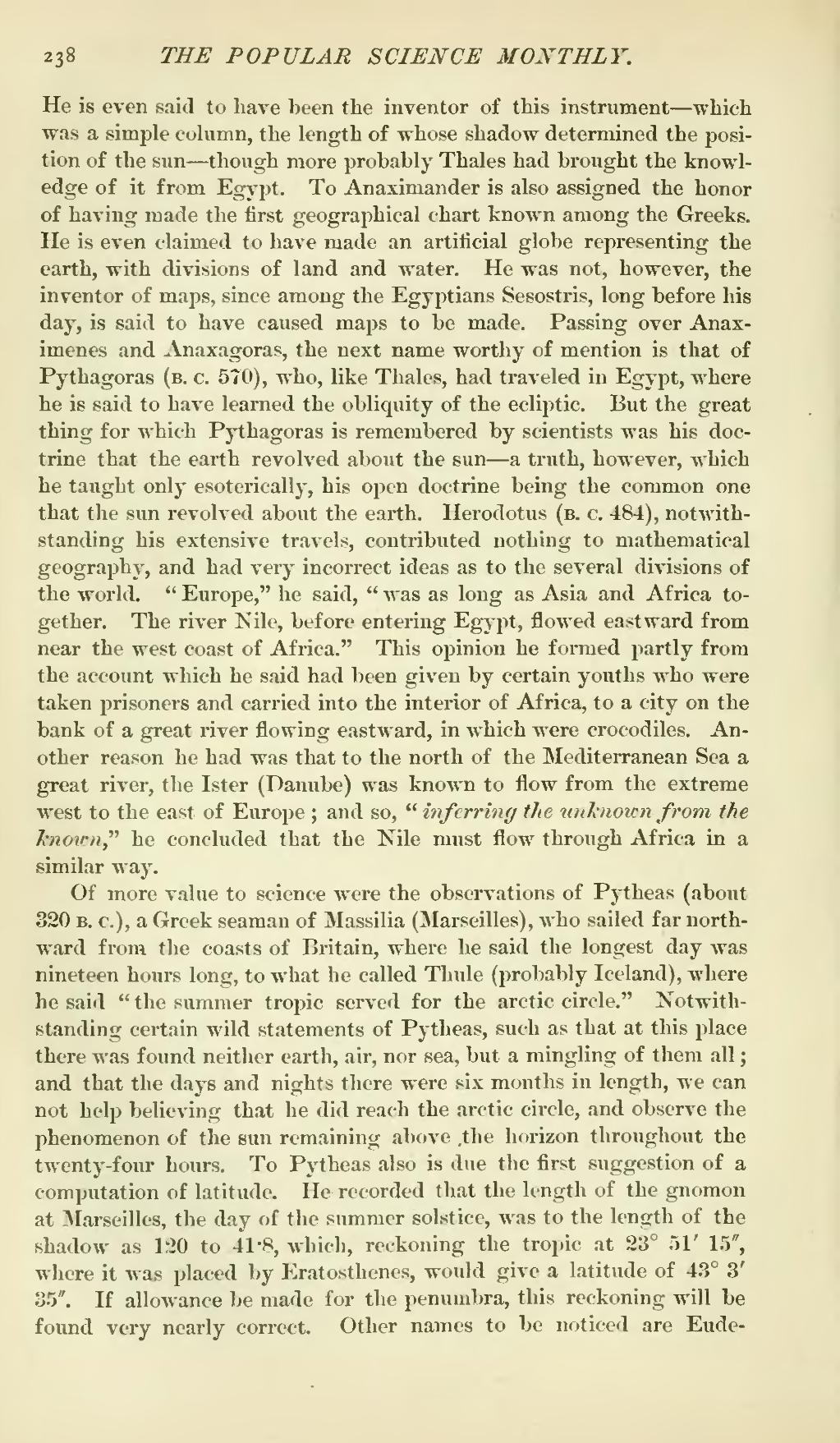He is even said to have been the inventor of this instrument—which was a simple column, the length of whose shadow determined the position of the sun—though more probably Thales had brought the knowledge of it from Egypt. To Anaximander is also assigned the honor of having made the first geographical chart known among the Greeks. He is even claimed to have made an artificial globe representing the earth, with divisions of land and water. He was not, however, the inventor of maps, since among the Egyptians Sesostris, long before his day, is said to have caused maps to be made. Passing over Anaximenes and Anaxagoras, the next name worthy of mention is that of Pythagoras (b. c. 570), who, like Thales, had traveled in Egypt, where he is said to have learned the obliquity of the ecliptic. But the great thing for which Pythagoras is remembered by scientists was his doctrine that the earth revolved about the sun—a truth, however, which he taught only esoterically, his open doctrine being the common one that the sun revolved about the earth. Herodotus (b. c. 484), notwithstanding his extensive travels, contributed nothing to mathematical geography, and had very incorrect ideas as to the several divisions of the world. "Europe," he said, "was as long as Asia and Africa together. The river Nile, before entering Egypt, flowed eastward from near the west coast of Africa." This opinion he formed partly from the account which he said had been given by certain youths who were taken prisoners and carried into the interior of Africa, to a city on the bank of a great river flowing eastward, in which were crocodiles. Another reason he had was that to the north of the Mediterranean Sea a great river, the Ister (Danube) was known to flow from the extreme west to the east of Europe; and so, "inferring the unknown from the known," he concluded that the Nile must flow through Africa in a similar way.
Of more value to science were the observations of Pytheas (about 320 b. c.), a Greek seaman of Massilia (Marseilles), who sailed far northward from the coasts of Britain, where he said the longest day was nineteen hours long, to what he called Thule (probably Iceland), where he said "the summer tropic served for the arctic circle." Notwithstanding certain wild statements of Pytheas, such as that at this place there was found neither earth, air, nor sea, but a mingling of them all; and that the days and nights there were six months in length, we can not help believing that he did reach the arctic circle, and observe the phenomenon of the sun remaining above, the horizon throughout the twenty-four hours. To Pytheas also is due the first suggestion of a computation of latitude. He recorded that the length of the gnomon at Marseilles, the day of the summer solstice, was to the length of the shadow as 120 to 41·8, which, reckoning the tropic at 23° 51' 15", where it was placed by Eratosthenes, would give a latitude of 43° 3' 35". If allowance be made for the penumbra, this reckoning will be found very nearly correct. Other names to be noticed are Eude-
